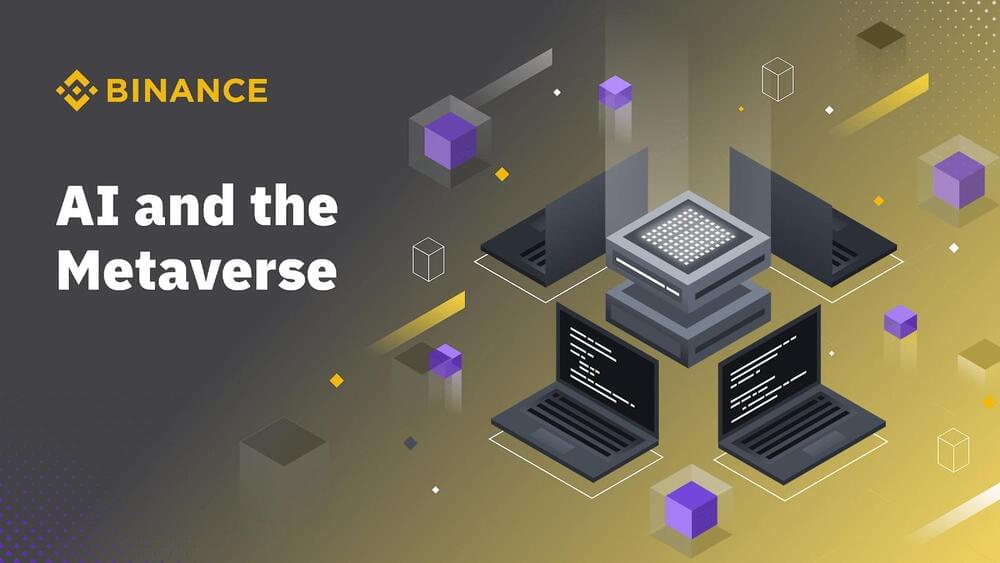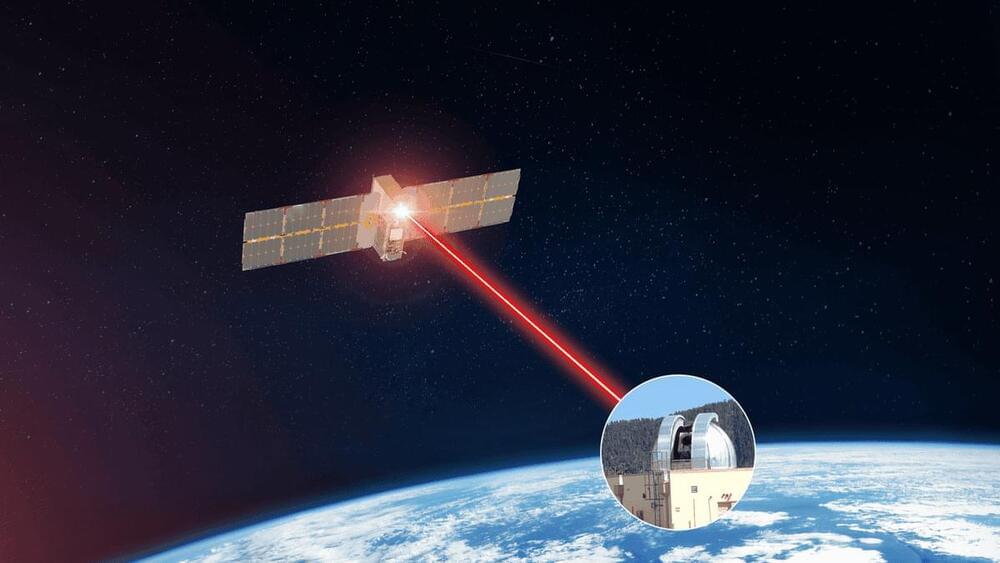Engineers in Japan just shattered the world record for the fastest internet speed, achieving a data transmission rate of 319 Terabits per second (Tb/s), according to a paper presented at the International Conference on Optical Fiber Communications in June. The new record was made on a line of fibers more than 1,864 miles (3,000 km) long. And, crucially, it is compatible with modern-day cable infrastructure.
Category: internet – Page 98
Tesla FSD Overly Aggressive after BIG update
Not perfect, but very impressive.
Sponsored:
Use my special link https://www.privateinternetaccess.com/AIDRIVR for an 83% discount, 4 months free and 30-day money-back guarantee on the best VPN — Private Internet Access.
Version: 11.4.1 [2023.7.5]
Consider supporting this channel on Patreon: https://patreon.com/AIDRIVR
Filming Equipment:

Wireless power demonstration overcomes a major hurdle
Wireless power would be worth the hype if it were widespread — modern life is burdened by a tangle of power cables and an endless hunt for plugs. But despite its potential, wireless power technology is still limited by range.
But Ericsson and PowerLight Technologies have made one dramatic form of wireless power, called optical beaming, work in a proof-of-concept experiment. Their demonstration showed that laser delivery of power to a portable 5G base station could be just around the corner.
The promise of wireless power: Wireless power is straight out of a sci-fi film: electrical power transmitted from place to place through a vacuum or the air. There is no need for wires, poles, outlets, or those pesky USB cubes, which are always lost when you need them most.

Exploring the Relationship Between Artificial Intelligence (AI) and the Metaverse
Artificial intelligence (AI) and the metaverse are some of the most captivating technologies of the 21st century so far. Both are believed to have the potential to change many aspects of our lives, disrupt different industries, and enhance the efficiency of traditional workflows. While these two technologies are often looked at separately, they’re more connected than we may think. Before we explore the relationship between AI and the metaverse, let’s start by defining both terms.
The metaverse is a concept describing a hypothetical future design of the internet. It features an immersive, 3D online world where users are represented by custom avatars and access information with the help of virtual reality (VR), augmented reality (AR), and similar technologies. Instead of accessing the internet via their screens, users access the metaverse via a combination of the physical and digital. The metaverse will enable people to socialize, play, and work alongside others in different 3D virtual spaces.
A similar arrangement was described in Neal Stephenson’s 1992 science-fiction novel Snow Crash. While it was perceived as a fantasy mere three decades ago, it seems like it could become a reality sooner rather than later. Although the metaverse isn’t fully in existence yet, some online platforms incorporate elements of it. For example, video games like Fortnite and Horizon World port multiple elements of our day-to-day lives into the online world.

SpaceX plans to launch Falcon 9 from both the East and West coasts hours apart
SpaceX plans to launch two Falcon 9 rockets hours apart from Florida and California. Starlink group 6–3 will launch from Cape Canaveral Space Force Station with a planned launch time of 12:41 AM ET (04:41 UTC) and from Vandenberg Space Force Base, Iridium OneWeb rideshare launch at 6:19 AM PT (13:19 UTC).
First up, SpaceX will launch booster 1,076 on its 5th flight to deliver 22 Starlink V2 mini-satellites to a 43 degree orbit inclination. The 22 Starlink V2 mini-satellites come in at a combined ~17.6 metric tons, potentially setting the record for the most mass to low Earth orbit for a Falcon 9. This shows a gradual increase in the confidence of the Falcon 9 to deliver high-mass payloads to orbit while maintaining the ability to recover the first stage. On station for this recovery is the droneship “A Shortfall of Gravitas,” stationed roughly 636 km downrange, just East of the Bahamas.
The current weather outlook for this launch has a 60% chance of violating launch criteria at the opening of the launch window. However, this launch has three more opportunities, 1:13 AM ET (05:31 UTC), 2:19 AM ET (06:19 UTC), and 3:09 AM ET (07:09 UTC) in which the weather improves to a 40% chance of violating launch criteria.
Meet ‘DarkBERT:’ South Korea’s Dark Web AI could combat cybercrime
A team of researchers from South Korea has developed a new LLM called “DarkBert,” which has been trained exclusively on the “Dark Web.”
A team of South Korean researchers has taken the unprecedented step of developing and training artificial intelligence (AI) on the so-called “Dark Web.” The Dark Web trained AI, called DarkBERT, was unleashed to trawl and index what it could find to help shed light on ways to combat cybercrime.
The “Dark Web” is a section of the internet that remains hidden and cannot be accessed through standard web browsers.
S-cphoto/iStock.


Russia’s war on Ukraine has caused lasting damage to international spaceflight cooperation
This article gives a clear and chilling assessment of the impact of the Ukraine conflict on the future of collaborative space exploration; in doing so it highlights how humankind’s habitual tendency towards wars severally slow, if not completely halt, our urgent reach for the stars. As that old warrior Churchill once said„ ‘Jaw, jaw is always better than War, war!’
Russia’s invasion of Ukraine in February 2022 has resulted in hundreds of thousands of deaths, millions homeless and displaced and billions of dollars of damage in infrastructure. The conflict has also had less immediate but significant impacts on other areas, including on the space industries of Ukraine and Russia, but also globally in terms of the launch market, spaceflight activity and international cooperation.
In the wake of the start of the conflict on Feb. 24, 2022, and resulting international backlash against Russia, the then-head of the Russian space agency Dmitry Rogozin threatened to end its cooperation with the West on the International Space Station (ISS) program over sanctions imposed on Russia. He also issued a threat to SpaceX founder and CEO Elon Musk for the company’s role in providing connectivity through its Starlink satellites.

‘Midjourney China’ launches — then its announcement disappears
After igniting a global obsession over generative art, ten-month-old Midjourney appears to be entering the Middle Kingdom, the world’s largest internet market.
In an article posted on the Tencent-owned social platform WeChat late on Monday, a corporate account named “Midjourney China” said it has started accepting applications for beta test users. But the account soon deleted its first and only article on Tuesday.
It’s unclear why the post disappeared after receiving an overwhelming reception in China. Applications would only be open for a few hours every Monday and Friday, the original post said, and users quickly filled up the first quota on launch day. TechCrunch hasn’t been able to test the product.

Automation that Works with You
Changing this dynamic requires not just new technology, but a different way of thinking about automation. Real worksites have clutter, traffic, patchy wifi, and a host of other routine inconveniences that serve as barriers tor automation. And real people have real jobs to do—requiring training, institutional knowledge, prioritization, collaboration, and other skills that are impossible to automate.
Automation tools need to be dynamic to add value and act as an extension of these teams, fitting into their current workplace, amplifying their expertise, going places they can’t, and completing tasks they don’t have time for. In short, making their jobs easier, not more complicated.